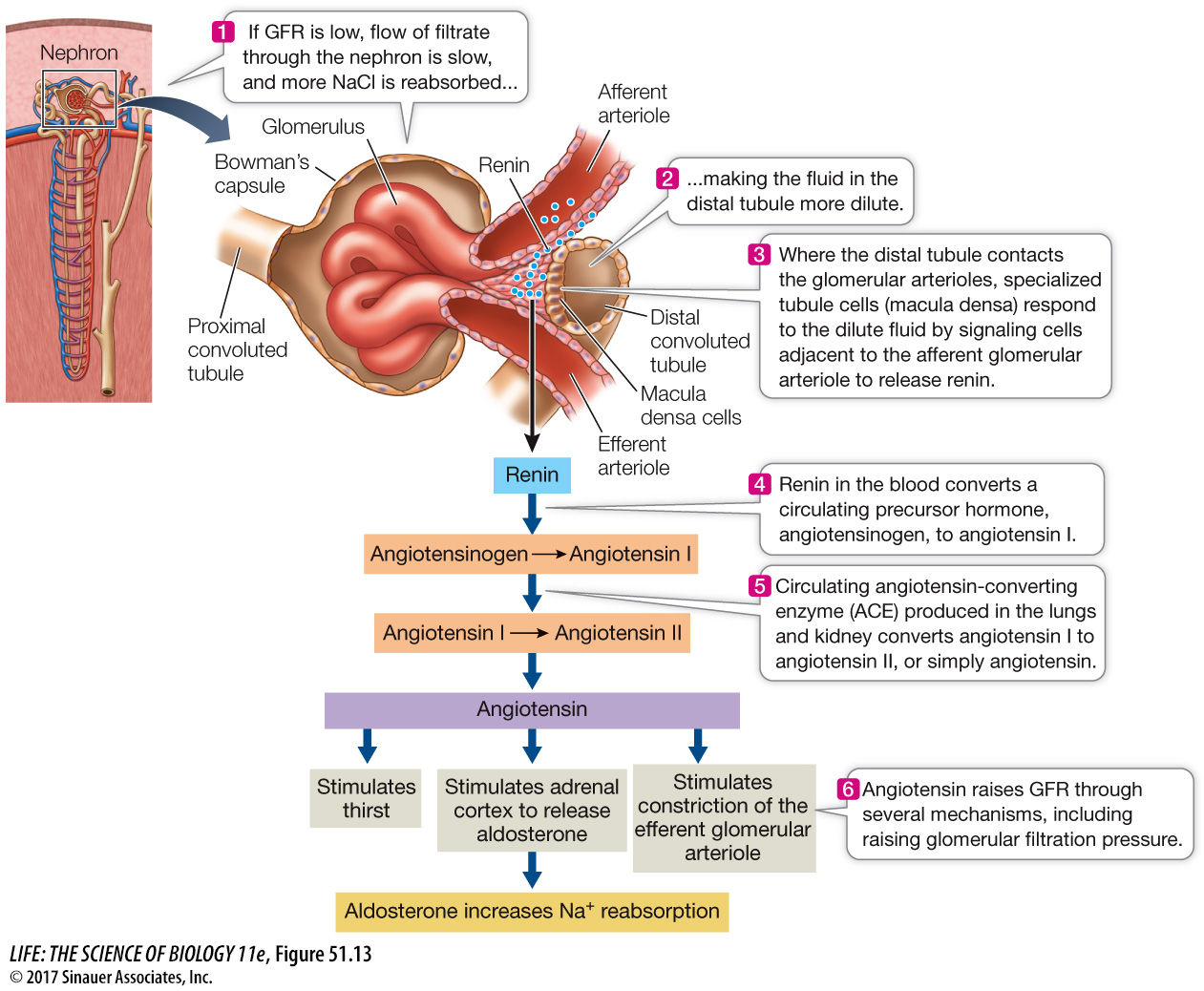Glomerular filtration rate is regulated
If the kidneys stop filtering blood, they cannot accomplish any of their functions. The maintenance of a constant glomerular filtration rate (GFR) depends on an adequate blood supply to the kidneys at an adequate blood pressure. Renal arteries usually deliver blood to the kidneys at high pressure because they are early branches off the aorta. In addition, autoregulatory mechanisms ensure adequate blood supply and blood pressure for kidney function regardless of what is happening elsewhere in the body. The kidney’s autoregulatory adjustments compensate for decreases in cardiac output or decreases in blood pressure so that the GFR remains constant.
One autoregulatory mechanism is the dilation (expansion) of the afferent renal arterioles when blood pressure falls. This dilation decreases the resistance in the arterioles and helps maintain blood pressure in the glomerulus. If arteriole dilation does not keep the GFR from falling, the kidney releases an enzyme, renin, into the blood. Renin converts a circulating protein, angiotensinogen, into angiotensin I, which is then acted on by angiotensin-
It constricts the efferent renal arterioles, raising the resistance for blood leaving the glomerulus. Like putting a finger over the end of a garden hose, this restriction of drainage elevates blood pressure in the glomerular capillaries.
It constricts peripheral blood vessels all over the body, an action that elevates blood pressure.
It stimulates the adrenal cortex to release the hormone aldosterone. Aldosterone stimulates sodium reabsorption by the kidney, making its reabsorption of water more effective. Enhanced water reabsorption helps maintain blood volume and therefore blood pressure.
It acts on the brain to stimulate thirst. Increased water intake in response to thirst increases blood volume and blood pressure.

Activity 51.4 Kidney Regulation Simulation
www.life11e.com/
Thus the renin–